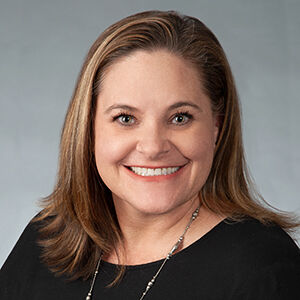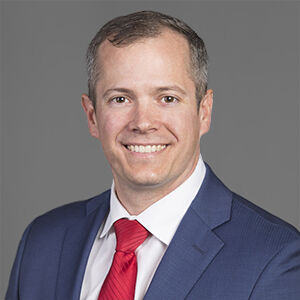In the six years since its introduction, the Opportunity Zone (OZ) program continues to gain more attention and broader success. Despite recent macroeconomic volatility, this year has seen increased excitement and a wider range of achievements.
The Tax Cuts and Jobs Act of 2017 (TCJA) gave way to the OZ program, which instantly became a hot topic across the real estate industry. The program intrigued investors with opportunities to defer tax on their capital gains until December 2026 and receive a stepped-up basis in their investment for at least 10 years. Additionally, investors were interested in taking advantage of the program’s benefits while new funds accommodated the public’s interest.
A Look Back: Origins of the OZ Program
The OZ program, introduced in 2017, primarily focuses on real estate investments. The program aimed to stimulate economic development and job creation by incentivizing investment in real estate and businesses located in OZs with distressed communities. Many Qualified Opportunity Funds (QOFs) were established to pool investor capital and invest in real estate developments, property rehabilitation and other projects located in OZs.
This focus on real estate was driven by the relatively clear, established nature of real estate investment, and the potential for visible and tangible impact on communities through property development and revitalization.
Qualified Opportunity Fund Requirements
QOFs must adhere to certain rules and guidelines to enable investors to qualify for the tax benefits. These rules pertain to the investment and operation of the QOF.
Some of the key aspects that a QOF must adhere to are:
90% Investment Rule
QOFs must invest at least 90% of their assets in Qualified Opportunity Zone Property (QOZP). This can include investments in QOZP or direct investments into a Qualified Opportunity Zone Business (QOZB).
Qualified Opportunity Zone Property (QOZP)
QOZPs refer to tangible property used in a trade or business of a QOF. If such property was acquired by the QOF after December 31, 2017, its original use in the Qualified Opportunity Zone (QOZ) must commence with, or be substantially improved by, the QOF. It should also be used during substantially all the QOF’s holding period, and substantially all the use of such property must have been in a QOZ.
Qualified Opportunity Zone Business (QOZB)
QOZBs are active trade or businesses located within the QOZ and meet certain requirements.
Active Business
Active businesses must derive at least 50% of total gross income of the entity from the active conduct of business. Any such business must use a substantial portion of the intangible property in its active conduct. Nonqualified financial property must attribute to less than five percent of the average of the aggregate unadjusted basis of the property. Finally, investors should not use any portion of the investment in “sin businesses.”
Substantial Improvement
The investing entity must substantially improve the property within 30 months of acquisition. The investing entity meets this requirement if it improves the property by over 100% of the basis.
Changes Across the OZ Landscape
As investment dollars poured into QOFs, fund managers looked to quickly deploy the capital into qualifying projects. The OZ program aimed to stimulate job creation and small business investments, but the initial OZ regulations prioritized real estate businesses. The “substantial improvement” test, used by QOFs investing in real estate, was more clearly defined than “50% of total gross income.” As a result, investors quickly touted QOFs as a new way to invest and participate in real estate development.
Most projects contained standard real estate investment structures: a lower-tier partnership holding the real estate, with a developer and an investor as the QOF. Local governments sought investment dollars and enhanced capital stacks by utilizing public-private ventures and incentives, along with and property contributions.
According to IRS and Treasury Department data, 50% of all U.S. OZs has seen investment by the end of 2020. Simultaneously, QOFs struggled to source viable projects because the prices of desirable OZ property had increased so that it made no economic sense for investment.
Like the rest of the world, COVID also impacted QOFs. Treasury Notice 2020-39 provided some relief for those who failed to meet the 90% investment standard. It also extended the working capital safe harbor plan and the QOF reinvestment of proceeds test. Supply chain issues and increased construction costs strained many projects that QOFs had invested in or planned to invest in.
Where Does OZ Stand Today?
There has been a renewed focus on OZ programs and their available benefits. Real estate-centered QOFs and QOZBs are facing increased construction costs and rising interest rates, straining the capital stack. Significant collaboration and consulting have been conducted to determine the best next steps, including abandoning projects and programs, monitoring testing periods and injecting capital.
QOFs and QOZBs that invested in the early part of the program have seen land values increase in many OZs. Fund managers have a unique opportunity to continue with the project as planned or generate an immediate return on investors’ capital. For funds that chose to sell the property, some opted to reinvest into a new project while others liquidated their investment.
Facing rising interest rates, increased construction costs and continued supply chain issues, fund managers can no longer complete their planned projects with their current combinations of debt and equity. In hopes of new capital or lower interest rates, some fund managers are deferring financing, adding pressure to the project timelines. Other projects are no longer feasible at the higher costs, so managers are intentionally failing their semi-annual testing.
Fund managers seeking additional capital are taking a creative approach. Some projects have seen non-OZ funds created to inject capital into the property entity. OZ project success motivates local governments, so fund managers seek additional incentives from them. One project even considered accepting stock as a capital contribution, despite it being a non-qualifying asset, and projected the cost of holding that non-qualifying asset due to failing the semi-annual testing.
OZ in Action
The most exciting development has been the shift from real estate development to business operations. Although previously largely ignored because of ambiguous program requirements, the 2019 regulations provided much needed clarification. As investors and fund managers came out of the COVID pandemic, interest and new businesses grew quickly.
For example, one fund in the agriculture industry decided to create one QOZB for real estate and another for agricultural activity. Infusions of QOF capital and USDA grants will support the business.
Another fund began as a real estate development project but now creates a workspace for new and developing life science businesses. QOF funds will be used as seed capital in life science businesses, attracting investment from external sources.
Although measuring the economic impact of OZ investment is to be determined, the program’s growth and capital infusion has spurred a new wave of excitement.
Let Us Guide You Forward
Cherry Bekaert can help your company grow and excel, regardless of the economic climate. Our Real Estate & Construction Industry professionals can tailor a strategic plan for your business goals, covering objectives such as effective tax strategies, capitalizing on tax incentives, structuring developments and profitability analyses. Contact our Opportunity Zone Tax Services Team for more information on OZ investment funds and assistance on next steps.
Related Insights
- Case Study – Utilizing Opportunity Zones to Maximize Your Investment
- Article – IRS Letters to Qualified Opportunity Zone Funds and Investors Regarding Forms 8996 and 8997





